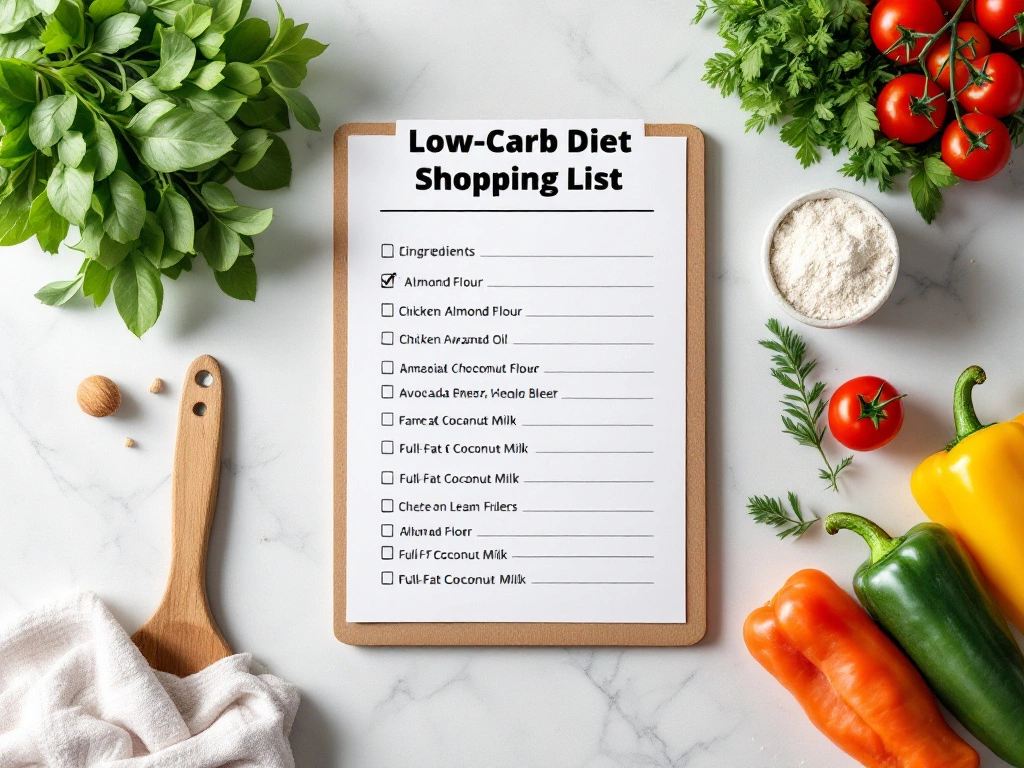Low-Carb Diet: A Beginner’s Guide to Effective Weight Loss
Introduction
In a world where fad diets come and go, the low-carb diet has stood the test of time as a scientifically backed approach to weight loss and improved health. With obesity rates soaring and chronic diseases like diabetes and heart disease on the rise, many individuals are turning to low-carb diets as a sustainable solution. But what exactly is a low-carb diet, and how can it help you achieve your health goals?
This comprehensive guide is designed to provide beginners with everything they need to know about starting and maintaining a low-carb diet. From understanding the science behind low-carb eating to practical tips for meal planning and overcoming challenges, this article will equip you with the knowledge and tools to succeed. Whether you’re looking to shed a few pounds, improve your metabolic health, or simply adopt a healthier lifestyle, this guide is your roadmap to success.
What is a Low-Carb Diet?
Defining Low-Carb Eating
A low-carb diet is a nutritional approach that restricts carbohydrate intake while emphasizing proteins, fats, and non-starchy vegetables. Unlike traditional diets that rely heavily on grains, sugars, and processed foods, a low-carb diet shifts the body’s primary energy source from glucose (derived from carbs) to fat.
Types of Low-Carb Diets
There are several variations of low-carb diets, each with its own level of carbohydrate restriction:
- Ketogenic Diet (Keto): Extremely low-carb (20-50 grams per day), high-fat, and moderate-protein. Designed to induce ketosis, a metabolic state where the body burns fat for fuel.
- Atkins Diet: Starts with a very low-carb phase and gradually increases carb intake over time.
- Paleo Diet: Focuses on whole, unprocessed foods and eliminates grains and refined sugars, naturally reducing carb intake.
- Low-Carb, High-Fat (LCHF): A moderate approach that emphasizes healthy fats and minimizes carbs without strict ketosis.
How It Works
When you reduce carbohydrate intake, your body depletes its glycogen stores and begins to burn fat for energy. This process can lead to weight loss, improved blood sugar control, and reduced insulin levels. Additionally, low-carb diets often result in reduced appetite, making it easier to maintain a calorie deficit.
The Science Behind Low-Carb Diets
Weight Loss Mechanisms
- Reduced Appetite: Protein and fat are more satiating than carbs, helping you feel fuller for longer.
- Lower Insulin Levels: Carbs spike insulin, a hormone that promotes fat storage. By reducing carbs, insulin levels drop, facilitating fat burning.
- Increased Fat Oxidation: With fewer carbs available, the body shifts to burning fat for energy.
Health Benefits Beyond Weight Loss
- Improved Blood Sugar Control: Low-carb diets are highly effective for managing type 2 diabetes and reducing insulin resistance.
- Better Heart Health: They can improve cholesterol levels by increasing HDL (good cholesterol) and reducing triglycerides.
- Enhanced Mental Clarity: Many people report improved focus and reduced brain fog on a low-carb diet.
- Reduced Inflammation: Lower carb intake can decrease markers of inflammation, which is linked to chronic diseases.
Getting Started: A Step-by-Step Guide
Step 1: Set Clear Goals
Before starting, define your objectives. Are you aiming for weight loss, better blood sugar control, or improved energy levels? Having clear goals will help you stay motivated.
Step 2: Understand Your Carb Needs
The ideal carb intake varies depending on factors like age, activity level, and health status. Beginners often start with 50-100 grams of net carbs (total carbs minus fiber) per day.
Step 3: Stock Your Kitchen
Fill your pantry and fridge with low-carb staples:
- Proteins: Eggs, chicken, fish, beef, tofu.
- Fats: Olive oil, avocado, butter, nuts, and seeds.
- Vegetables: Leafy greens, broccoli, cauliflower, zucchini.
- Dairy: Cheese, Greek yogurt, heavy cream.
Step 4: Plan Your Meals
Create a weekly meal plan to avoid last-minute temptations. Focus on simple, whole-food recipes that align with your carb goals.
Step 5: Track Your Progress
Use a food diary or app to monitor your carb intake and track changes in weight, energy levels, and overall health.
What to Eat and What to Avoid
Low-Carb Foods to Enjoy
- Proteins: Meat, poultry, fish, eggs.
- Fats: Avocado, olive oil, coconut oil, butter.
- Vegetables: Spinach, kale, broccoli, asparagus.
- Dairy: Cheese, cream, unsweetened yogurt.
- Nuts and Seeds: Almonds, walnuts, chia seeds.
Foods to Limit or Avoid
- High-Carb Foods: Bread, pasta, rice, potatoes.
- Sugary Foods: Candy, soda, pastries.
- Processed Foods: Chips, crackers, fast food.
- Starchy Vegetables: Corn, peas, carrots (in large quantities).
Practical Tips for Success
Tip 1: Start Slowly
If you’re used to a high-carb diet, gradually reduce your carb intake to minimize side effects like fatigue or headaches.
Tip 2: Stay Hydrated
Low-carb diets can cause water loss, so drink plenty of water and replenish electrolytes.
Tip 3: Don’t Fear Fat
Healthy fats are a cornerstone of low-carb eating. They provide energy and keep you satiated.
Tip 4: Experiment with Recipes
Explore low-carb versions of your favorite dishes, such as cauliflower rice or zucchini noodles.
Tip 5: Be Patient
It takes time for your body to adapt to a low-carb lifestyle. Stick with it, and the results will follow.
Common Challenges and How to Overcome Them
Challenge 1: The Keto Flu
As your body transitions to burning fat, you may experience flu-like symptoms. Combat this by staying hydrated, increasing salt intake, and getting enough rest.
Challenge 2: Social Situations
Dining out or attending events can be tricky. Plan ahead by checking menus or bringing your own low-carb dishes.
Challenge 3: Cravings
Carb cravings are common in the beginning. Satisfy them with low-carb alternatives like dark chocolate or berries.
Challenge 4: Plateaus
Weight loss may slow over time. Adjust your carb intake, increase physical activity, or try intermittent fasting to break through plateaus.
Long-Term Sustainability
Making It a Lifestyle
A low-carb diet isn’t just a short-term fix; it’s a sustainable way of eating. Focus on whole, nutrient-dense foods and listen to your body’s hunger cues.
Balancing Flexibility and Discipline
While it’s important to stay committed, allow yourself occasional treats to prevent feelings of deprivation.
Monitoring Your Health
Regularly check in with your doctor, especially if you have underlying health conditions. Blood tests can help ensure your diet is supporting your overall well-being.
Conclusion
The low-carb diet is more than just a trend; it’s a powerful tool for achieving weight loss and improving overall health. By understanding the science, planning your meals, and overcoming challenges, you can successfully adopt this lifestyle and reap its many benefits.
Remember, the key to success lies in consistency and patience. Start small, stay informed, and celebrate your progress along the way. Whether you’re looking to lose weight, manage a health condition, or simply feel better, a low-carb diet can be a transformative journey toward a healthier, happier you.
Final Thoughts
As with any dietary change, it’s essential to consult with a healthcare professional before starting a low-carb diet, especially if you have medical conditions or take medications. With the right approach and mindset, you can unlock the potential of low-carb eating and achieve your health and wellness goals.









Add comment